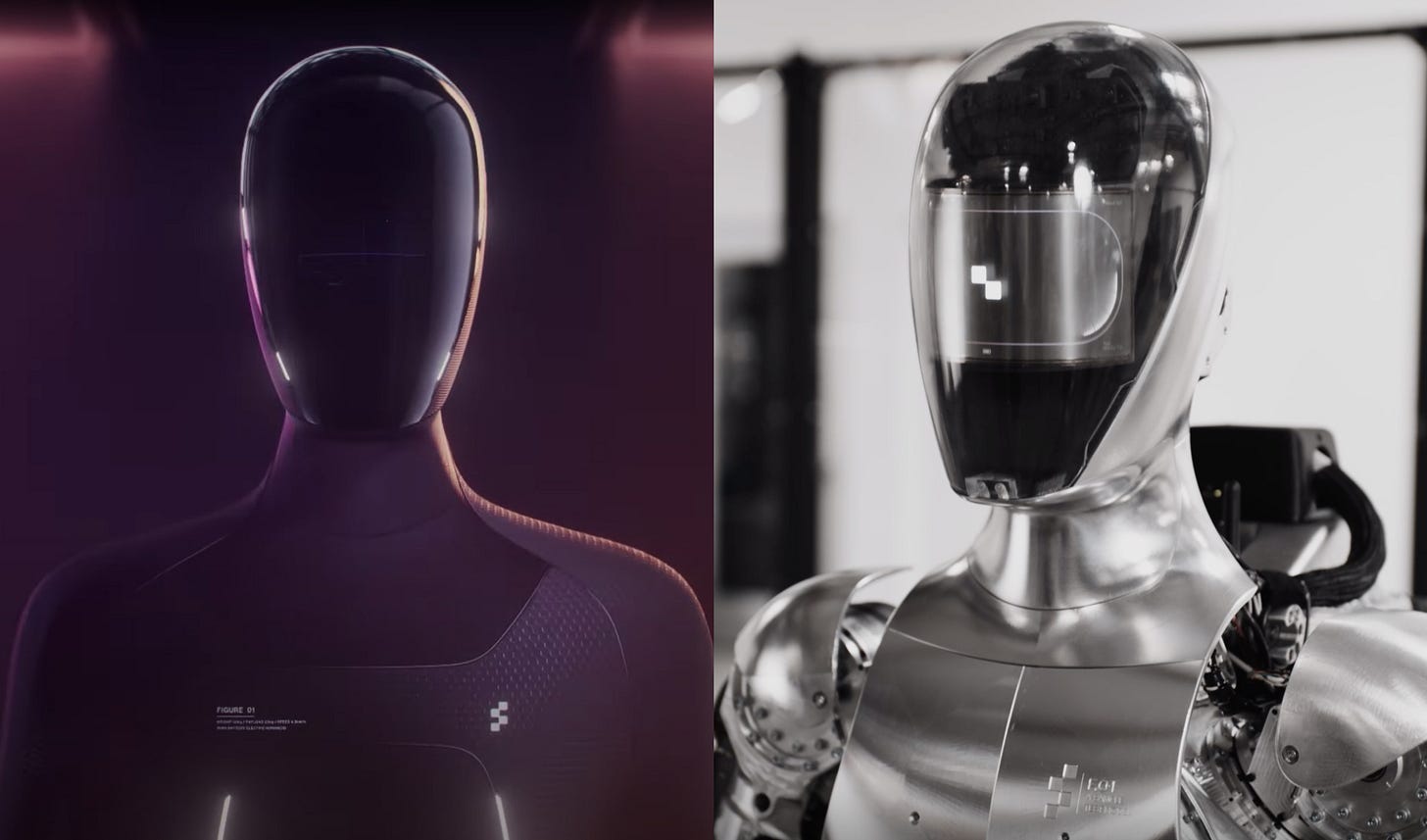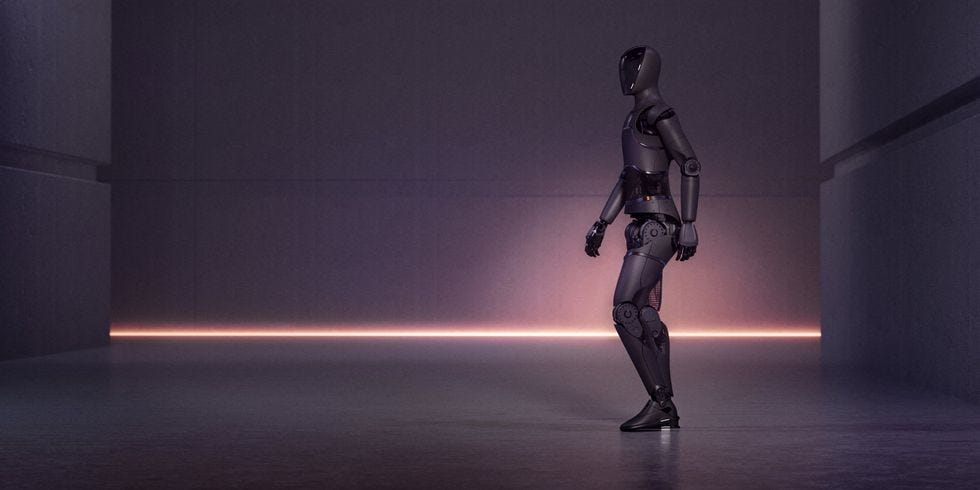Picture a world where machines walk, talk, and interact with us as if they were fellow humans. The realm of humanoid robots has transitioned from science fiction to the forefront of innovation.
After Tesla’s ‘Optimus’ and Boston Dynamics’ ‘Atlas’, two names you may be familiar with, I would like to introduce to you to a third humanoid that has entered the game: ‘Figure 01’. Less than 24 hours ago, Figure, the company building it, released its first major update showing the robot taking its first steps.
A new kind of race is emerging between these companies. The question: who can build the first commercially-viable humanoid?
A new player enters the arena
Figure is a relatively new player. The company came out of stealth in March of this year, spearheaded by Founder & CEO Brett Adcock, who previously founded the companies Archer and Vettery.
Back in March, Figure released a flashy promo video and slick website, which apart from satisfying imagery contained a section laying out their so-called “Masterplan”.
The ambition? To develop general purpose humanoids that make a positive impact on humanity. Not afraid to picture a grandiose future for the company, it reads:
“Our company journey will take decades — and require a championship team dedicated to the mission, billions of dollars invested, and engineering innovation in order to achieve a mass-market impact. We face high risk and extremely low chances of success. However, if we are successful, we have the potential to positively impact humanity and to build the largest company on the planet.”
It was reported in May that the company raised $70 million in funding from investors in its first external round led by Parkway Venture Capital.
Vision vs. reality
According to the video released today, a team of 60 people spent the past 12 months building the first generation humanoid.
Similar to a child, having your robot take its first steps is a major milestone, especially because walking is a surprisingly hard robotics problem to solve.
Apart from walking, the video gives us a good impression of what the robot looks like and as we all know, first impressions are everything.
In line with the original promotion material, the company has decided to equip the humanoid with a display instead of a face — a rather dystopian design choice, if you ask me: 1987 RoboCop meets Black Mirror.
Beyond that, I’ll admit that it makes a fairly harmless impression with its clunky big hands and slow walking pace. It certainly doesn’t look like it could overpower you, me, or a bunch of us together.
Also the video doesn’t show anything else but a walk, onto what seems to be a perfectly smooth and flat testing area, which may seem a little underwhelming. For reference, some competitors are already engaged in full-body athletics: doing parkour, sorting objects based on color and shape, and showing off their yoga routine.
It shows that it’s still early days for Figure 01 — and the company has quite some catching up to do. Nonetheless, for a 12-months timespan it has showcased remarkable progression and I’m sure people are paying attention.
The road to commercial viability
Even though it took Figure 12 months to come this far, the next 12-24 months are going to be even more important. The biggest challenge will be to see if they can show a clear road to commercial viability, to make sure that 1st round of investments wasn’t made in vain (and to attract new investors in the future).
CEO Brett Adcock has been very open about what the next chapter for the company will look like. In an interview dating back to May, he describes the 4 most important focus areas:
Overall robot development: working towards the second generation humanoid
Working on the manufacturing process
Building out and designing an end-to-end data engine
Working on commercial go-to-market
On that last point, he expands by saying:
“We are in pretty deep discussions at this point with a few of the top tier household names in the US to deploy humanoids in area’s where these companies see significant labor shortages in jobs that are dangerous and repetitive.”
The jobs he is alluding to are pre-dominantly warehousing and manufacturing jobs. He also adds:
“We basically have a vision now into the next 24 months to demonstrate commercial viability and then ultimately getting to market and proving that humanoids can be helpful to society.”
There’s some corporate double-speak going on here, as you can see. ‘Helpful to society’ = having big corporate conglomerates augment or replace considerable parts of their workforce with humanoid robots.
That said, together with the advancement in language AI and vision, it feels like we are actually close to making real humanoids work, technologically speaking. The rise of the robot workforce seems the inevitable course for humanity — but even though this is the most likely scenario, the risk of failure is real and it may push back timelines.
It remains to be seen if Figure can catch up with its competitors (who haven’t shown commercial viability yet, either). So, Figure 01 might have taken its first steps, but it’s not a run race by any means.
Join the conversation 💬
Leave a comment with your thoughts. Are we going to see humanoid robots roaming around in our warehouses soon? Will Figure be the company to get the first commercially-viable humanoid in mass-production?





